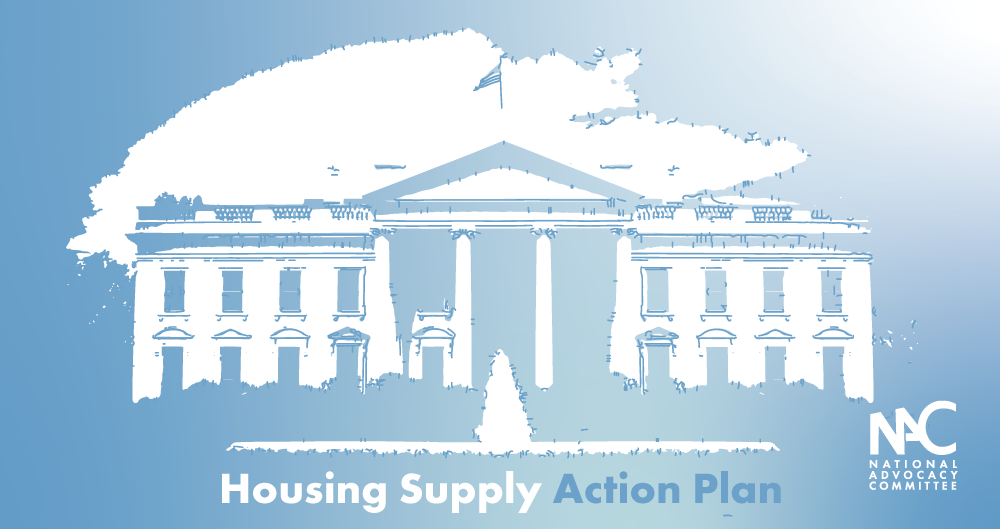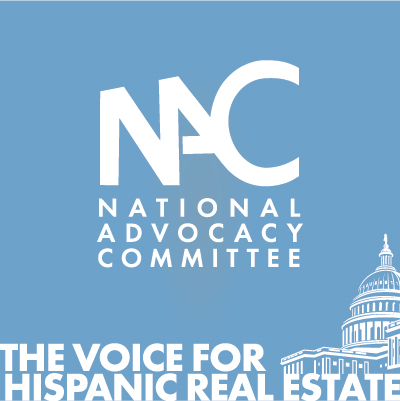The White House’s Housing Supply Action Plan
Celebrating NAHREP familia, cultura, politics, and grassroots action
May 19, 2022
Qué onda mi gente?!
Many of you might have heard about the Biden Administration’s Housing Supply Action Plan by now. I thought I would break it down so that we all know what to be excited about and what to be cautiously optimistic about.
According to the plan, if implemented, the housing shortage will be filled in 5 years. Given that we are short about 5.5 million homes and demand will only continue to increase, that is definitely ambitious.
When I first saw the plan, my thoughts went to: well, how much can the Administration actually do on its own right now without relying on Congress? There was an ambitious housing supply element to the Build Back Better Package, but we know where that went. Congress is pretty much not passing anything that isn’t part of a big bill like that right now, so the Administration will need to get things done without relying on Congress. Remember, anything that requires funding has to get Congressional approval.

Noerena’s take on the White House’s Housing Supply Action Plan
The plan’s goal to fill the housing supply gap in 5 years relies on Congress passing all the bills we just went to Capitol Hill to advocate for, plus additional funding in the budget for housing supply. I don’t know if that is realistic given today’s political climate. Parts of the plan urge Congress to pass of some of the bills we’ve been advocating for, such as the Neighborhood Homes Investment Act, the Unlocking Possibilities Program and ambitious funding commitments for the building and rehabbing of homes through the 2023 Budget process. However, below are the items I thought were the most interesting and promising that the Administration plans to do through Executive Action. Meaning, these are the things they plan to do immediately without having to rely on Congressional approval.
The plan:
- Creates a point scale to reward jurisdictions that have reformed zoning and land-use policies so that they get higher scores in certain federal programs, such as transportation funding.The plan uses existing Department of Transportation funding to promote density and land use for housing, giving higher scores to cities and municipalities that are doing a good job. I’m excited about this. This is one of the potentially most impactful elements of the plan. We went to Capitol Hill talking about how we needed a “stick” (punishment) to ensure that all jurisdictions were easing land-use policies and that a “carrot” (reward) wasn’t enough. If a city’s funding application is denied because other areas have higher points in this area, it definitely works as a stick.
- Creates new financing to build and preserve more manufactured housing, ADUs, 2-4 unit properties, and smaller multifamily buildings.Financing for 2-4 unit properties: The plan provides ways that Fannie Mae and Freddie Mac, along with HUD, can increase financing to build 2-4 unit properties, filling an important financing gap. These types of properties are exactly what we are encouraging more Latinos to buy in order to build wealth.
Scaling up ADUs and piloting ADU and home renovation financing tools: Both FHA and FHFA are exploring ways to help lenders pilot and scale renovation and construction financing for ADUs, particularly for low- to moderate-income (LMI) homeowners, and options for single-family and 2-4 unit rehabs. This is a big deal in places like California that have passed ADU laws. There needs to be a financing mechanism so that existing homeowners can build them!
- Plans to expand and improve existing forms of federal financing, such as Construction to Permanent loans and the HOME Investment Partnerships Program, to build more homes.Construction to Permanent Loans: The plan seeks to strengthen GSE financing for multifamily development and rehabilitation, especially in construction to permanent multifamily loans. These are loans that would cover both the purchase of the land and costs of construction, along with the mortgage on the finished property.
Leverage unused funds for housing production: Using available COVID-19 relief funds (that didn’t get used) for investments in affordable housing, particularly building additional affordable housing units. This is an important one.
Strengthen existing programs for home production: Advance the HOME Investment Partnerships Program (HOME) as a key tool for increasing the building, buying, or rehabilitating affordable housing for rent or homeownership and continue to drive housing production through the Federal Financing Bank’s Risk Sharing Program. This was part of our policy priorities and where a lot of the funding was proposed for new home construction under BBB.
- Ensure that more government-owned supply of homes and other housing goes to owners who will live in them-or non-profits who will rehab them-not large institutional investors.Use Community Development Block Grant (CDBG) funding for local purchase of homes that will go to owner-occupants and non-profits. CDBG funding are grants that HUD gives to cities to use for community revitalization and community and economic development. However, using that funding to buy homes to go to first-time homebuyers is an interesting idea.
- Address cost of materials and labor supply.Work with Builders: Meet with the building industry to explore additional actions to help them build more entry-level housing. The Department of Commerce also recently reduced fees on softwood lumber shipments from Canada, which is really good news!
Promote modular, panelized, and manufactured housing and construction R&D: Address hurdles to modular and panelized housing and inconsistent state and local inspection requirements and standards that limit economies of scale and potential cost savings.
Finally, the plan urges Congress to pass Comprehensive Immigration Reform: The plan says that the Administration will continue to work on accelerating visa processing and other improvements to our immigration system. I was glad this was mentioned. It was the very last line but we continue to shout through the roof that Immigration is Economic Policy. We need to pass immigration reform in order to address our labor shortages.
All in all, there’s some good stuff in there. I’m especially encouraged by the point system on zoning and land-use reform. This isn’t the only solution but it is definitely a step in the right direction and I’m very happy that there is finally a concerted effort to address this issue federally.
Meanwhile, we will continue to do our City Council meetings because we still need local policy changes. This is where we need YOU! I know this is a lot, but all in all, the truth is that we won’t fill the gap unless we all speak up and get involved. Let’s keep the passion going.

About Noerena Limón
Noerena Limón is NAHREP’s Executive Vice President of Public Policy and Industry Relations. Noerena heads the organization’s policy and advocacy efforts on issues ranging from homeownership, housing inventory, credit access and immigration.
Prior to joining NAHREP, Noerena spent six years at the Consumer Financial Protection Bureau (CFPB) and served as a political appointee under President Obama in the White House Office of Political Affairs.



